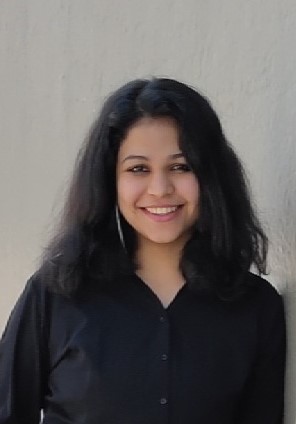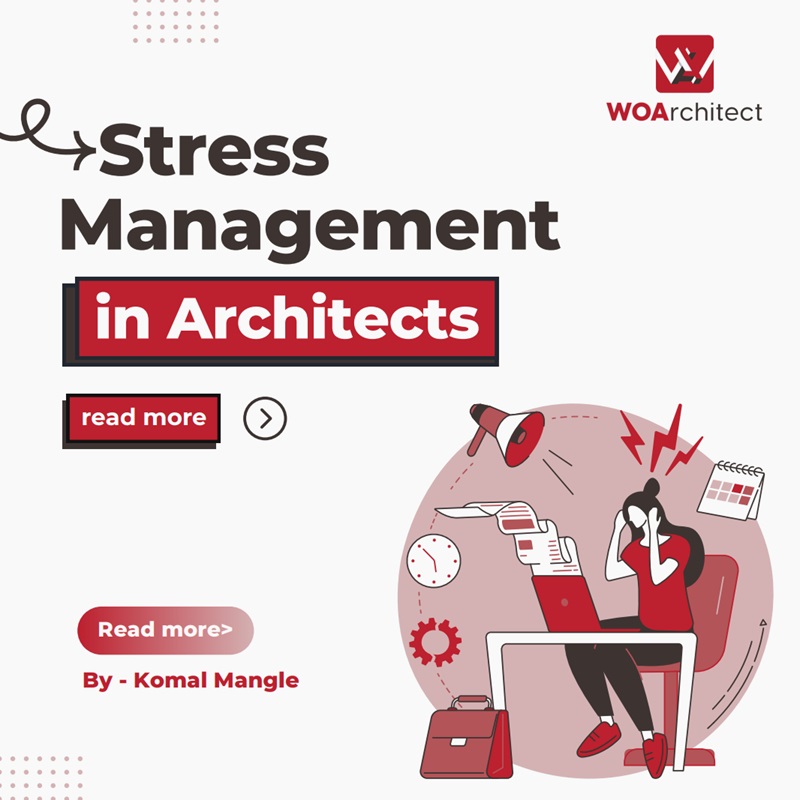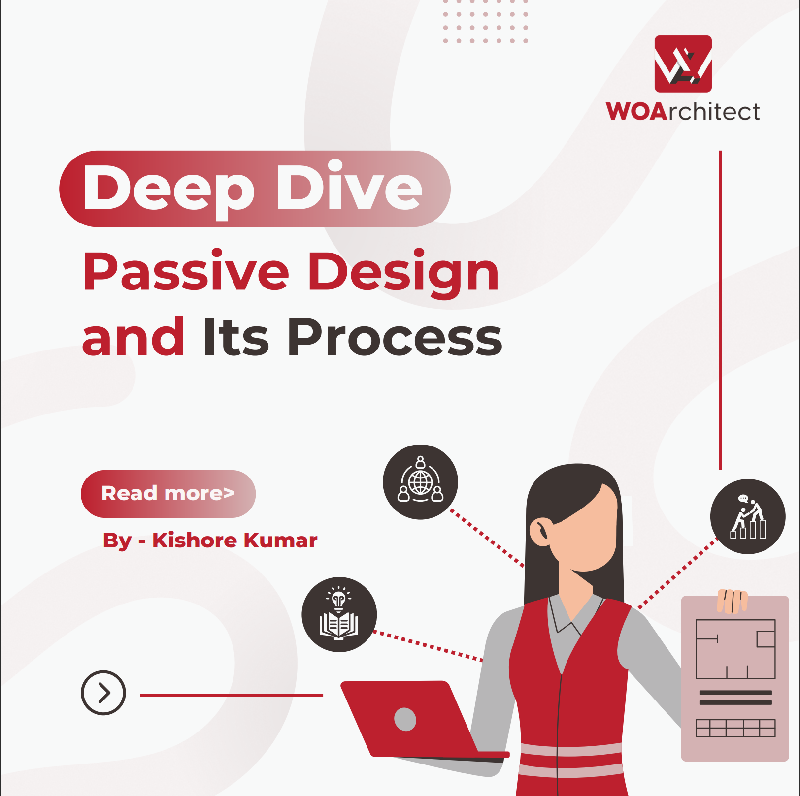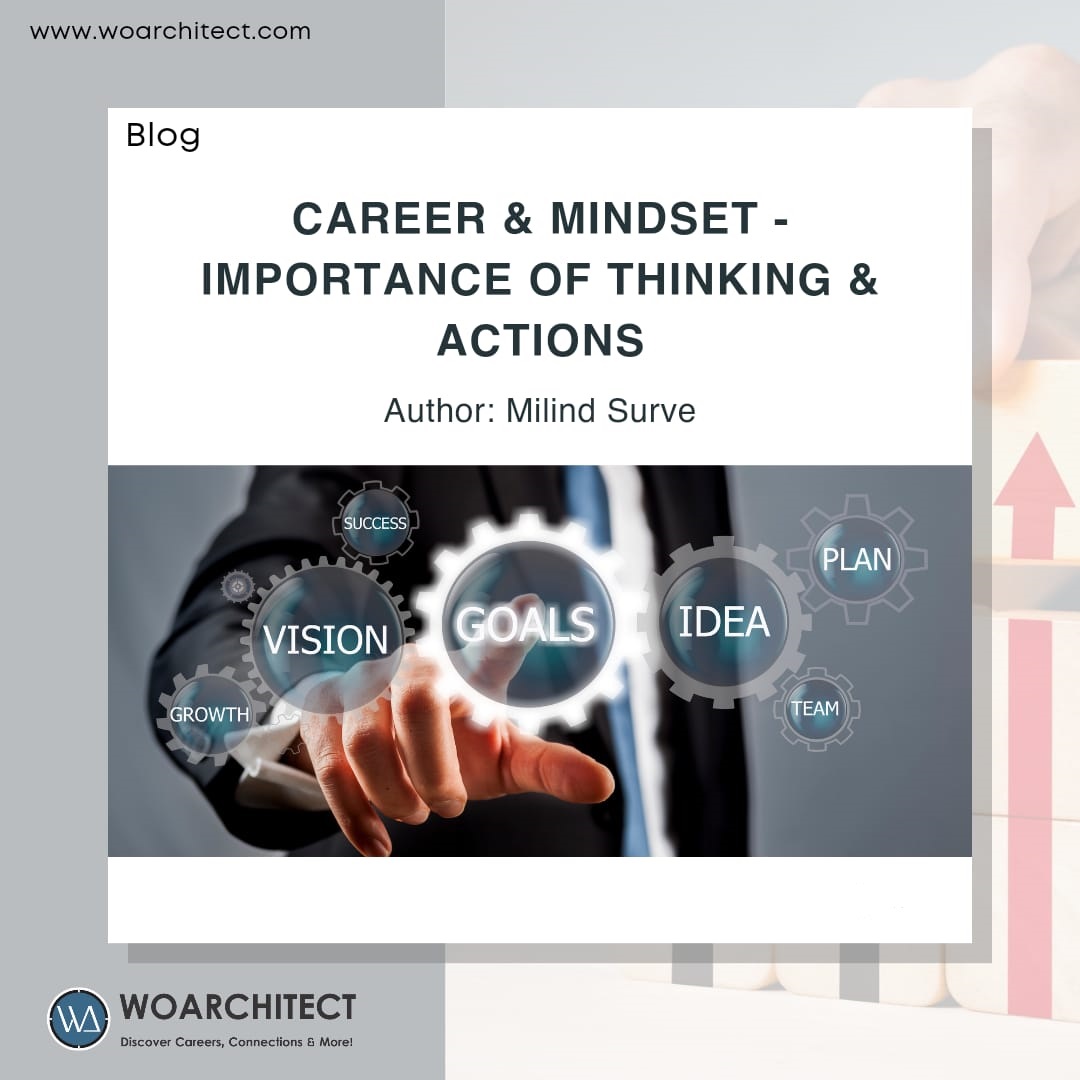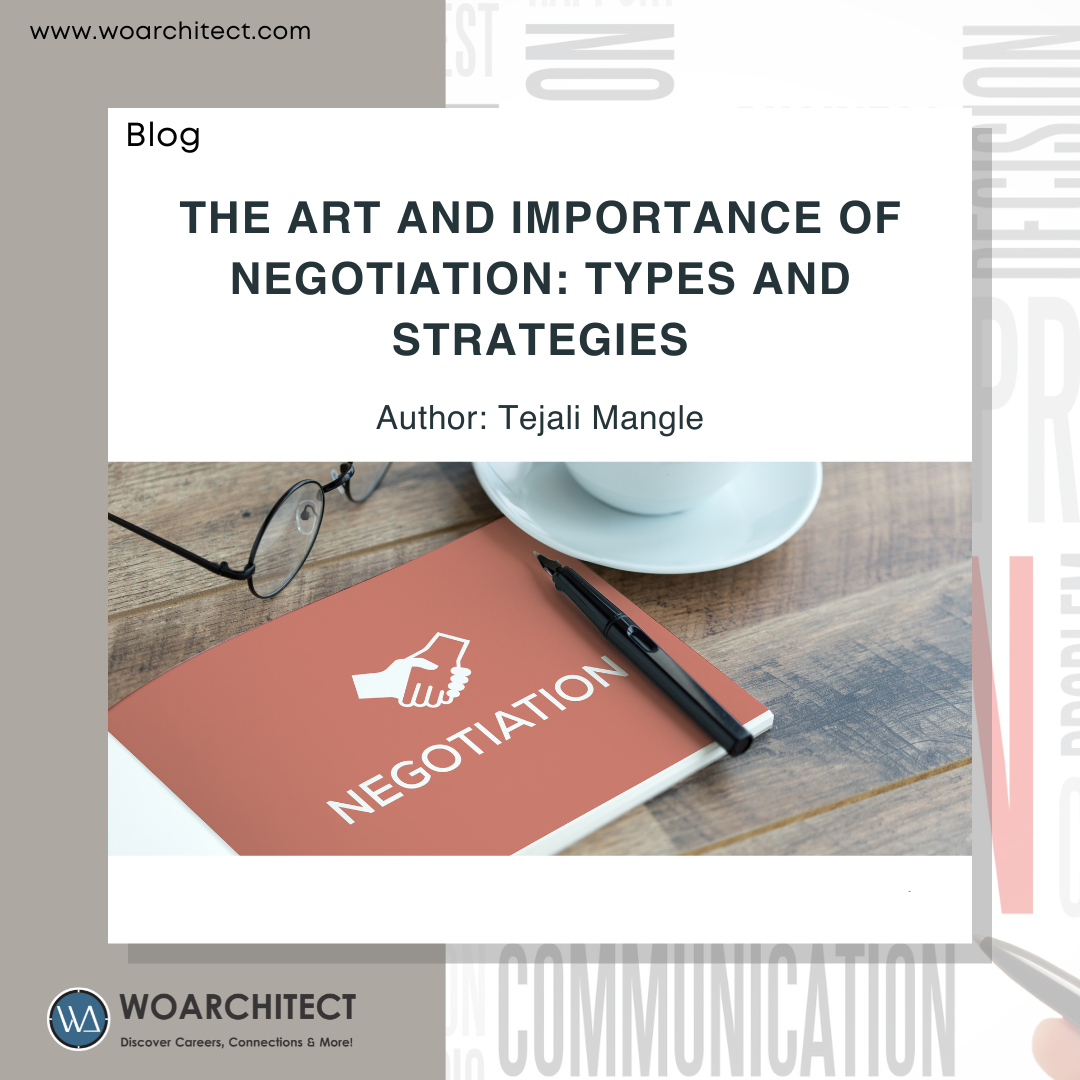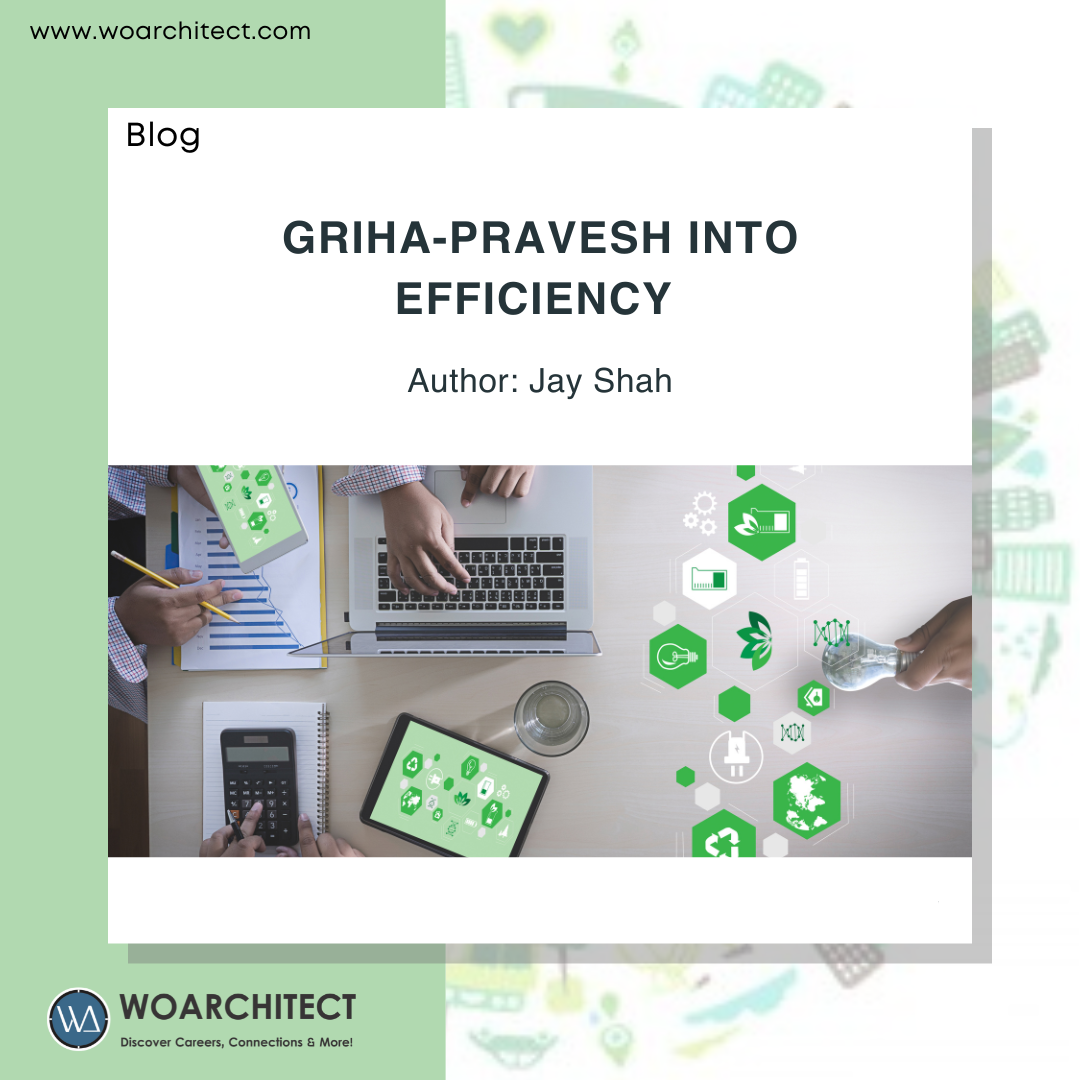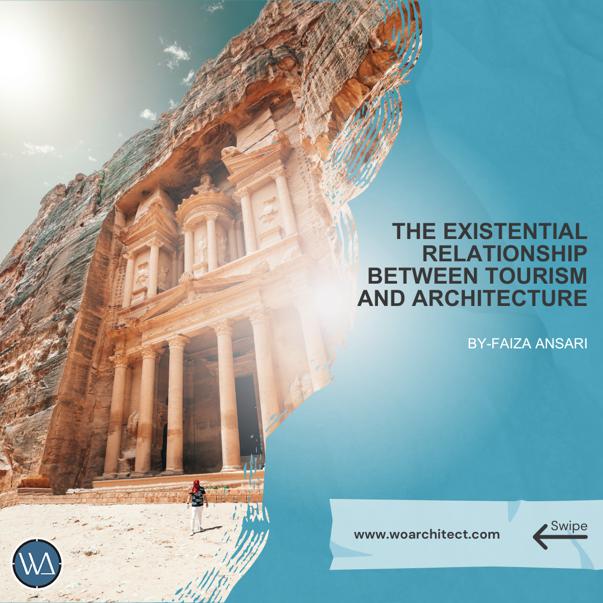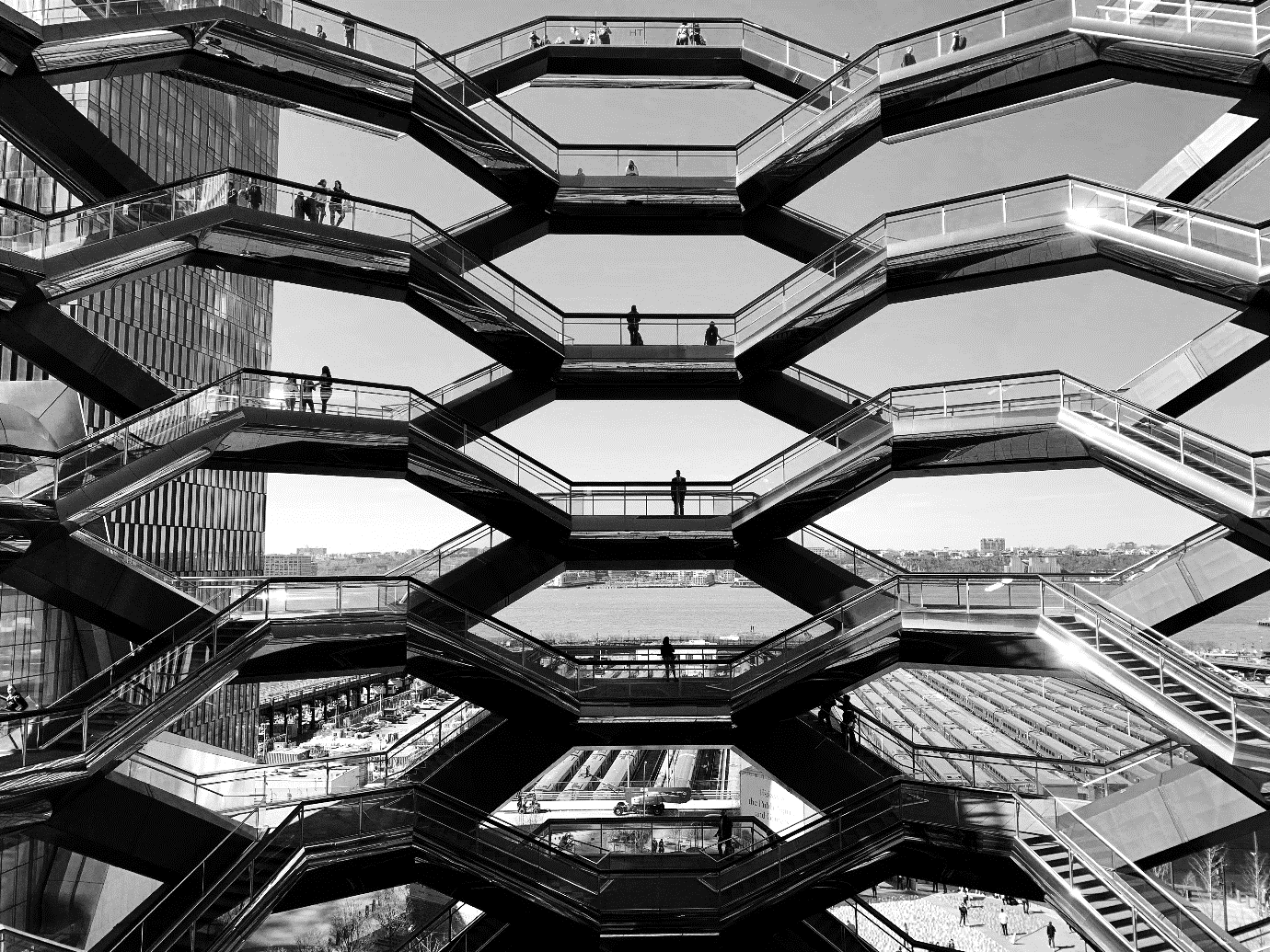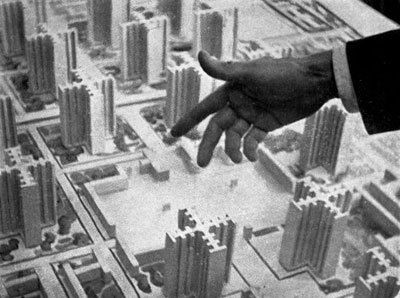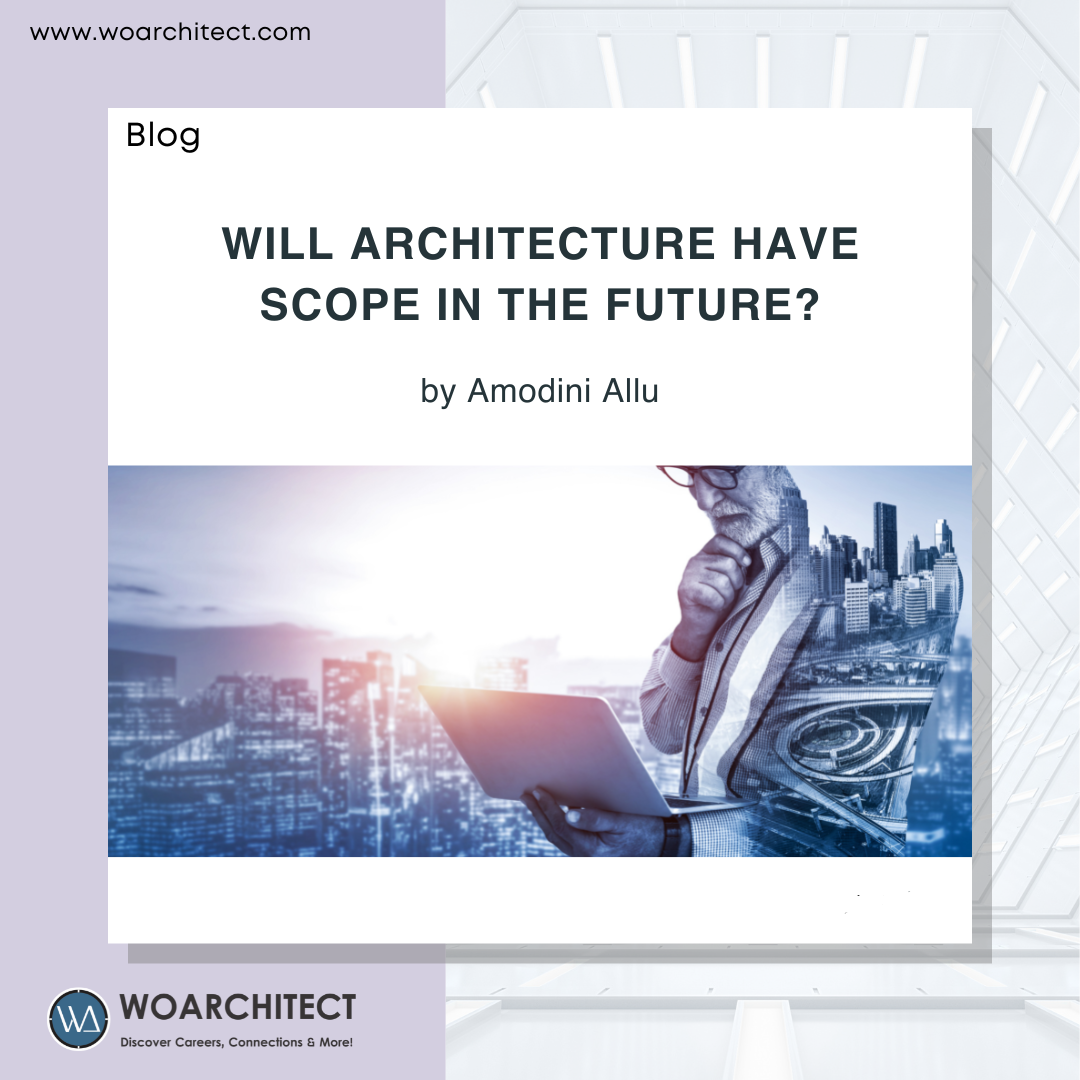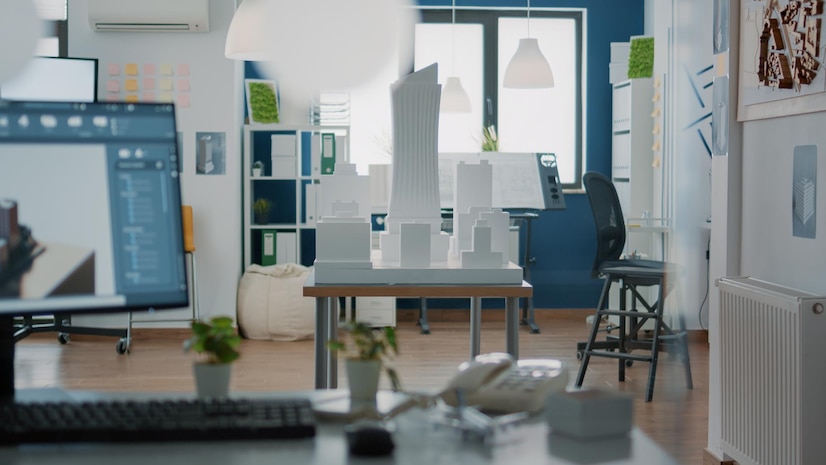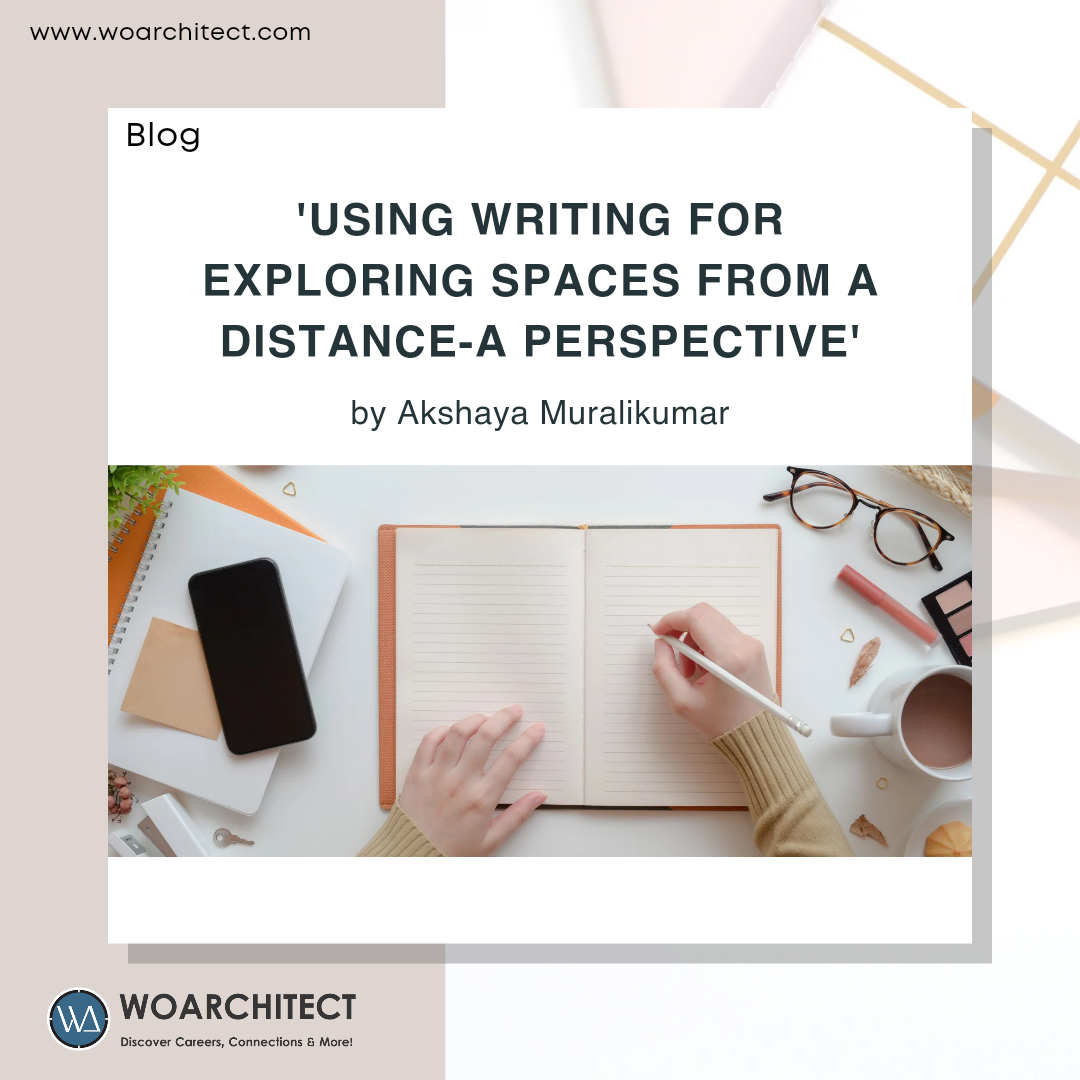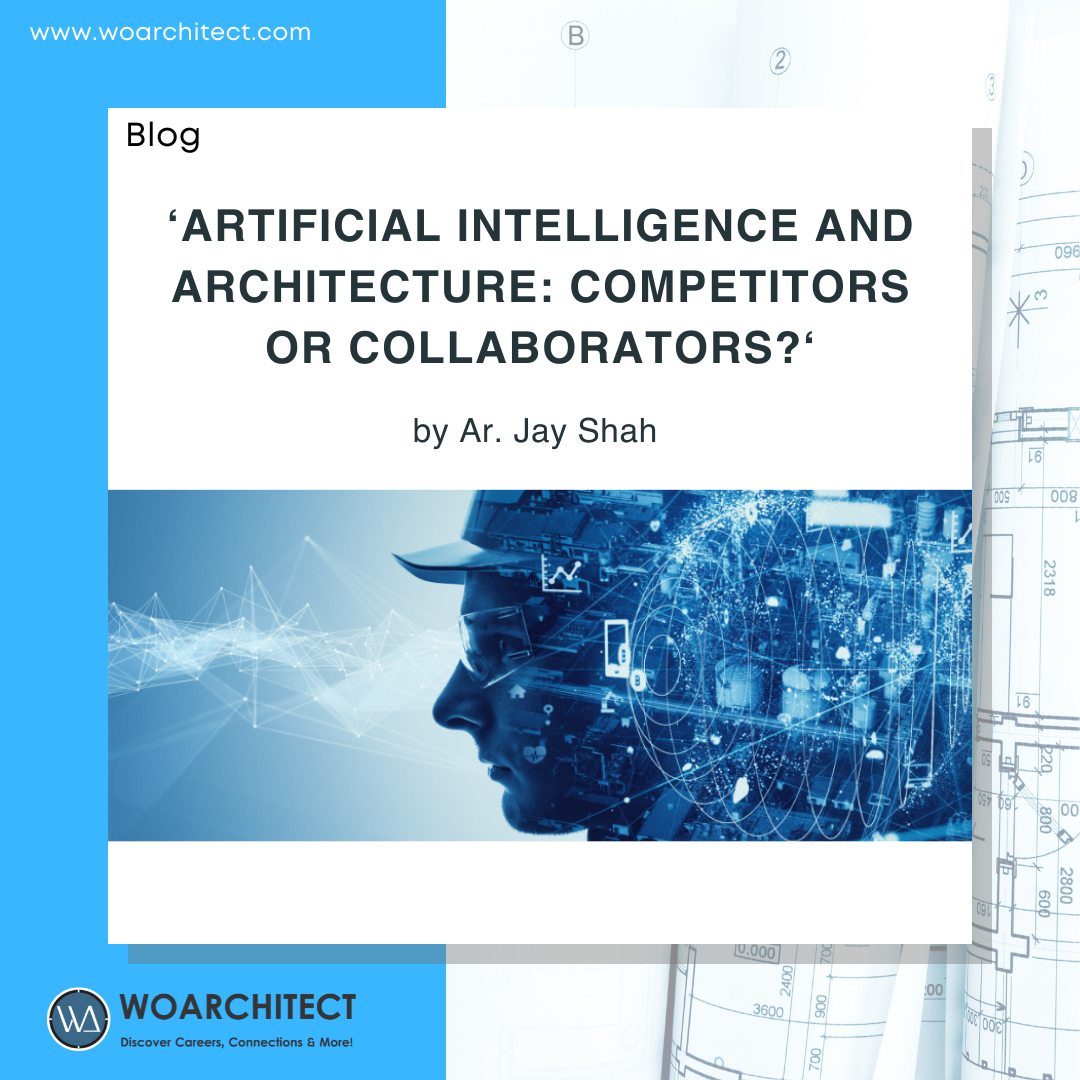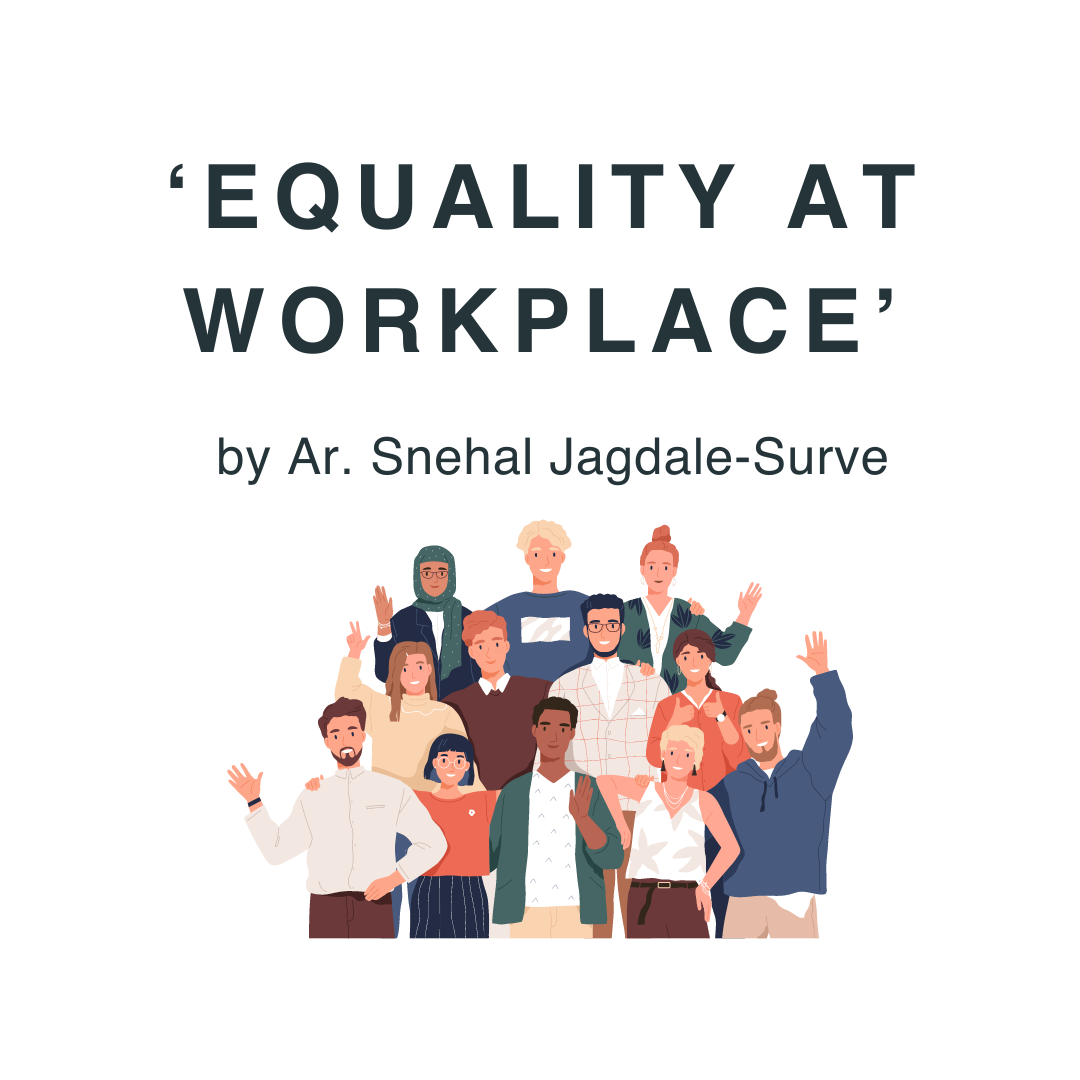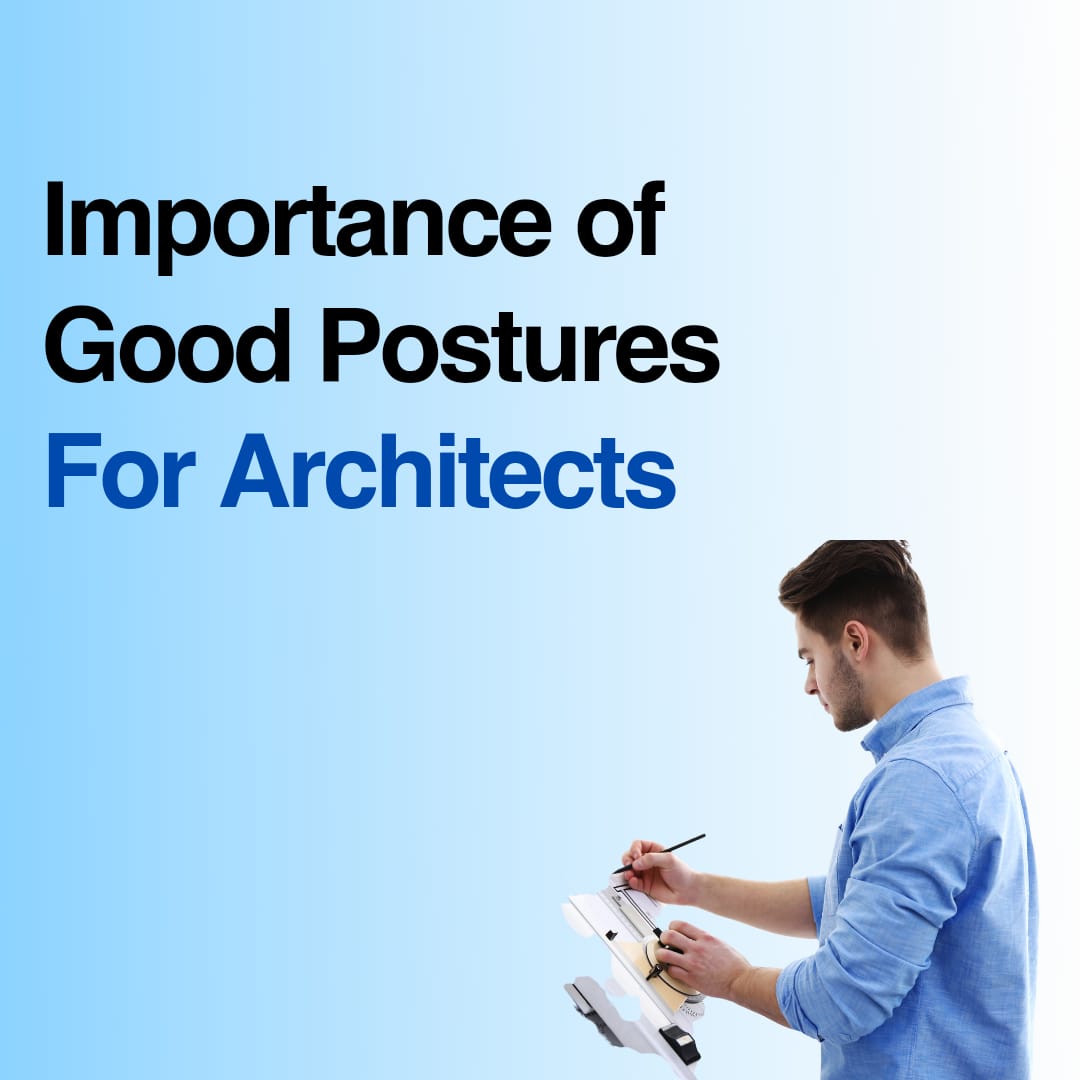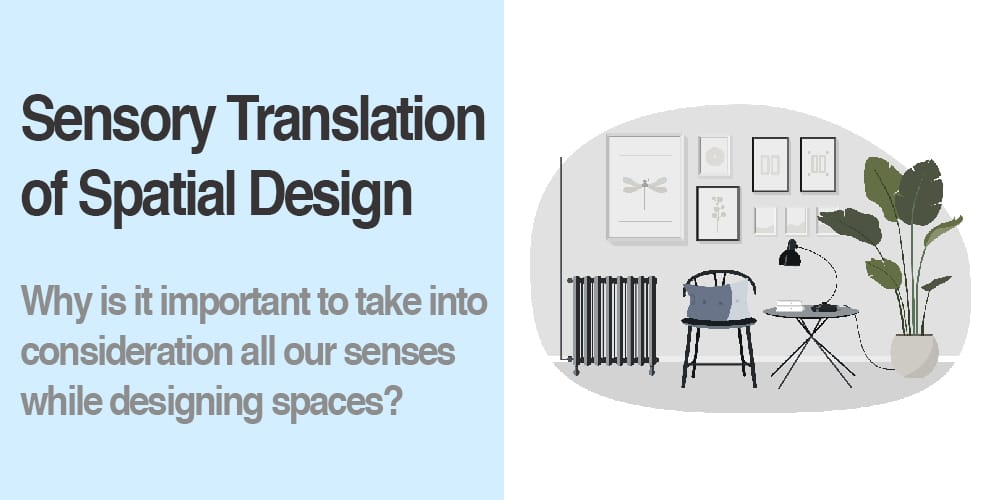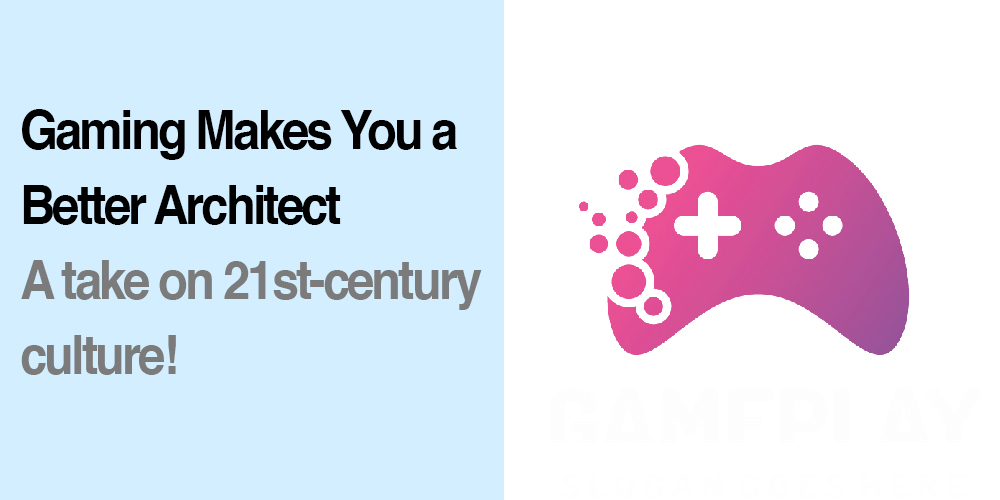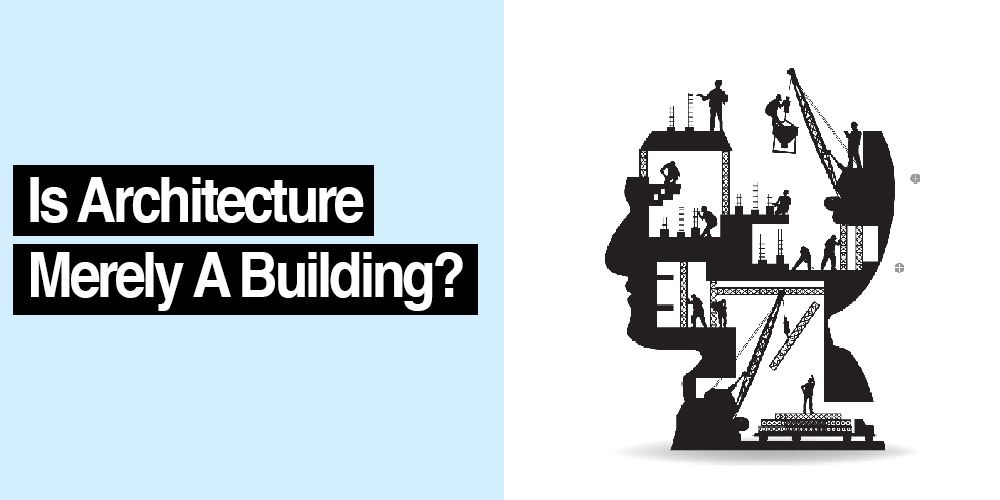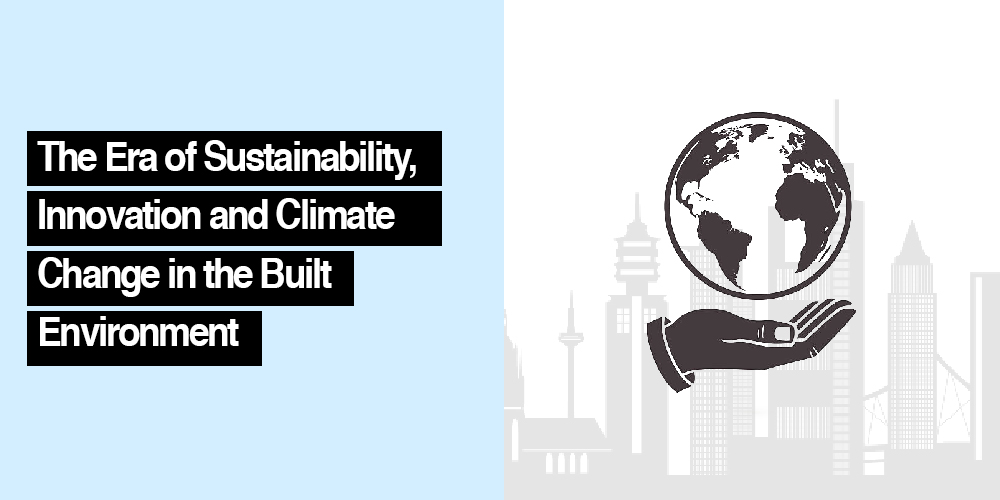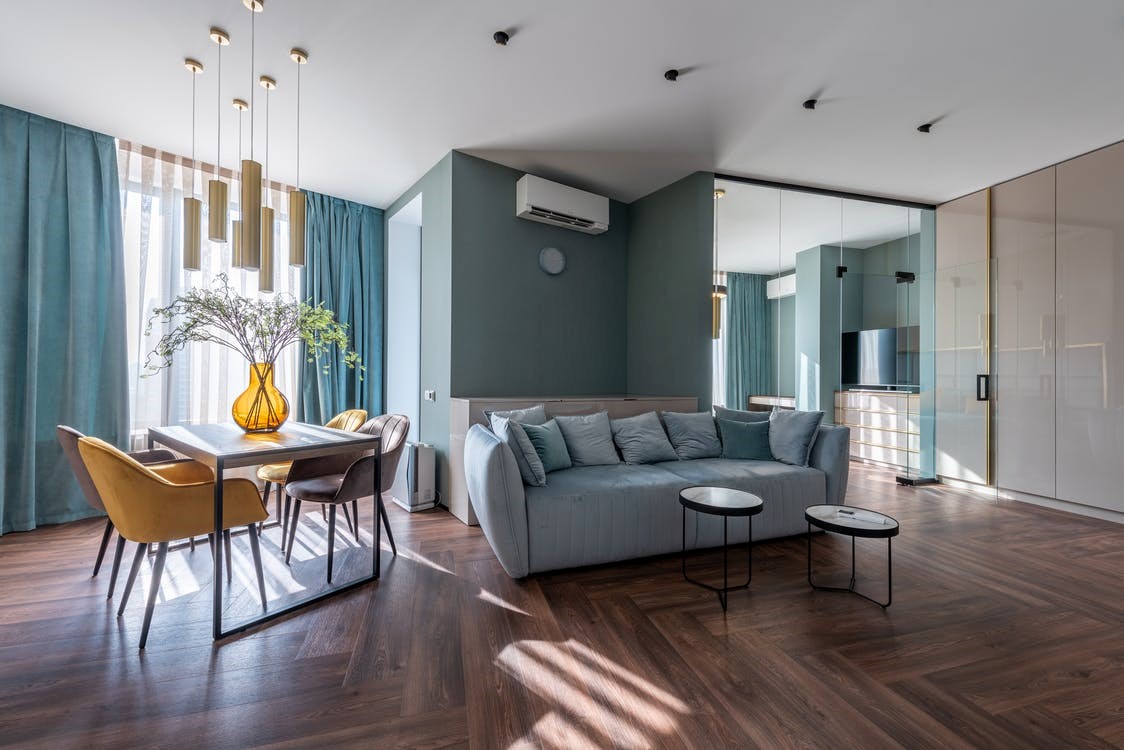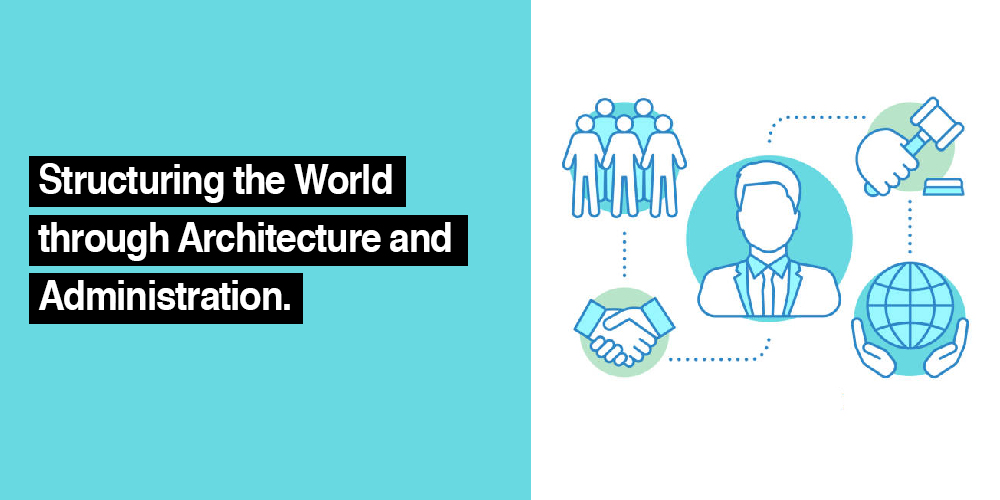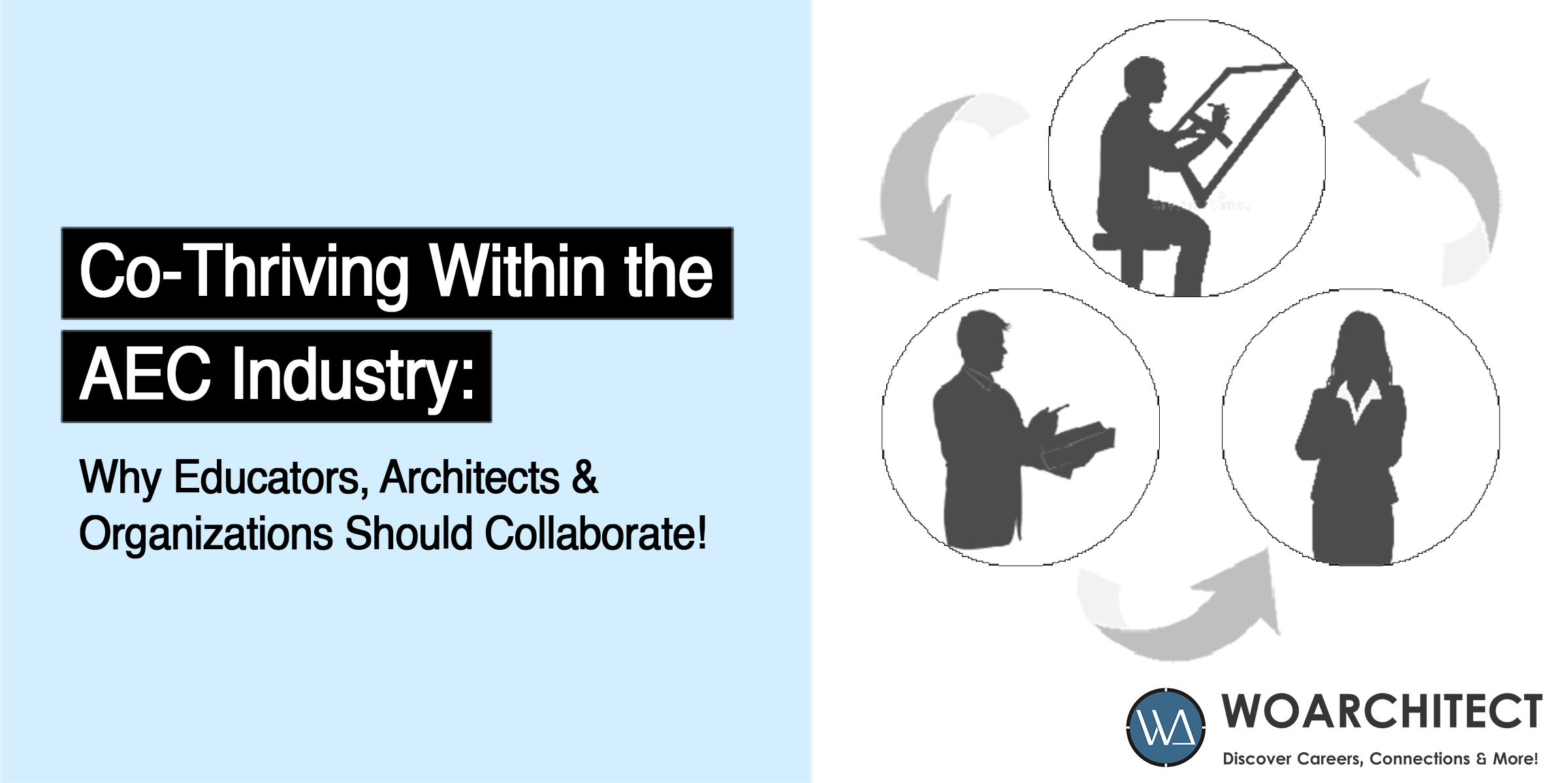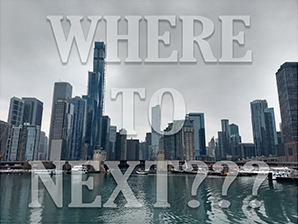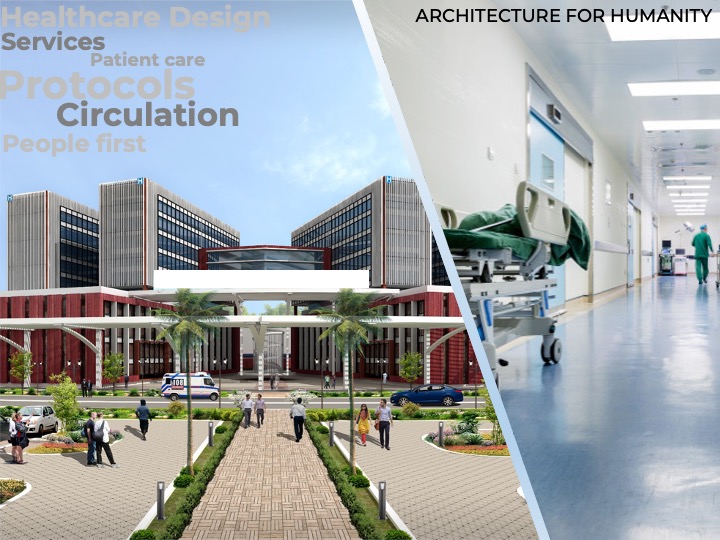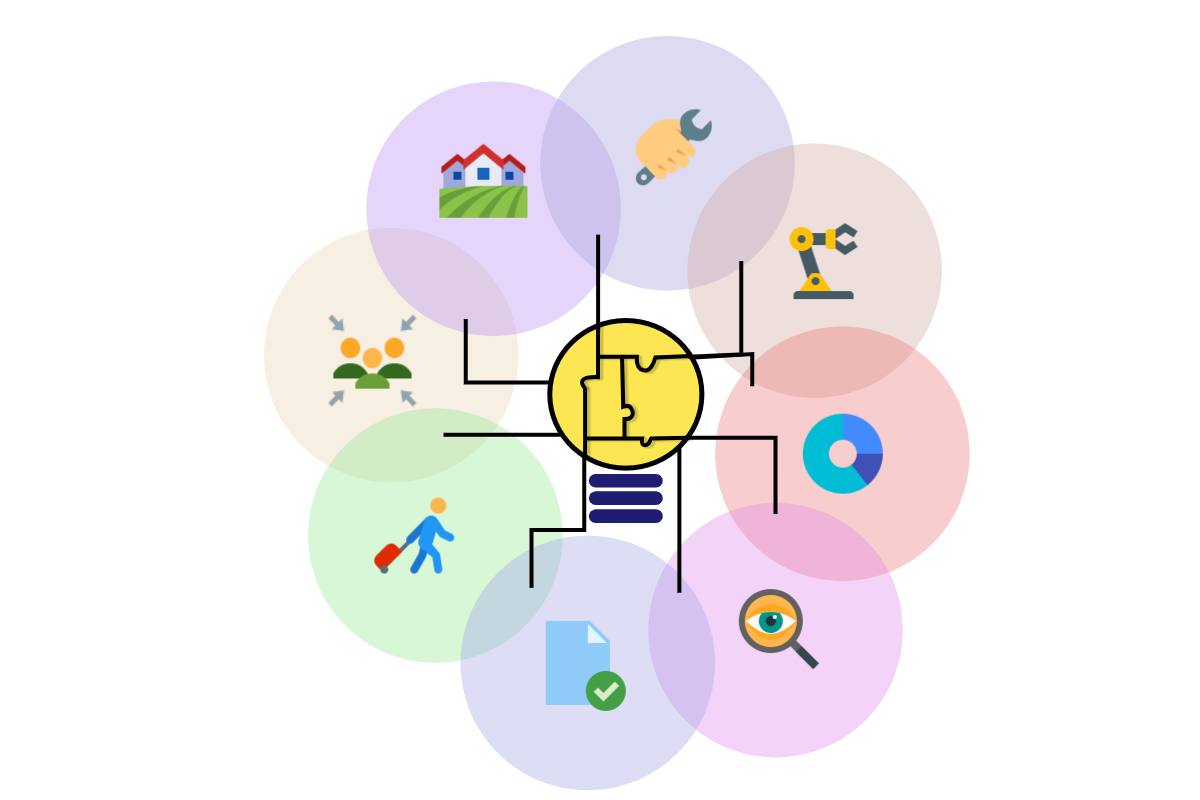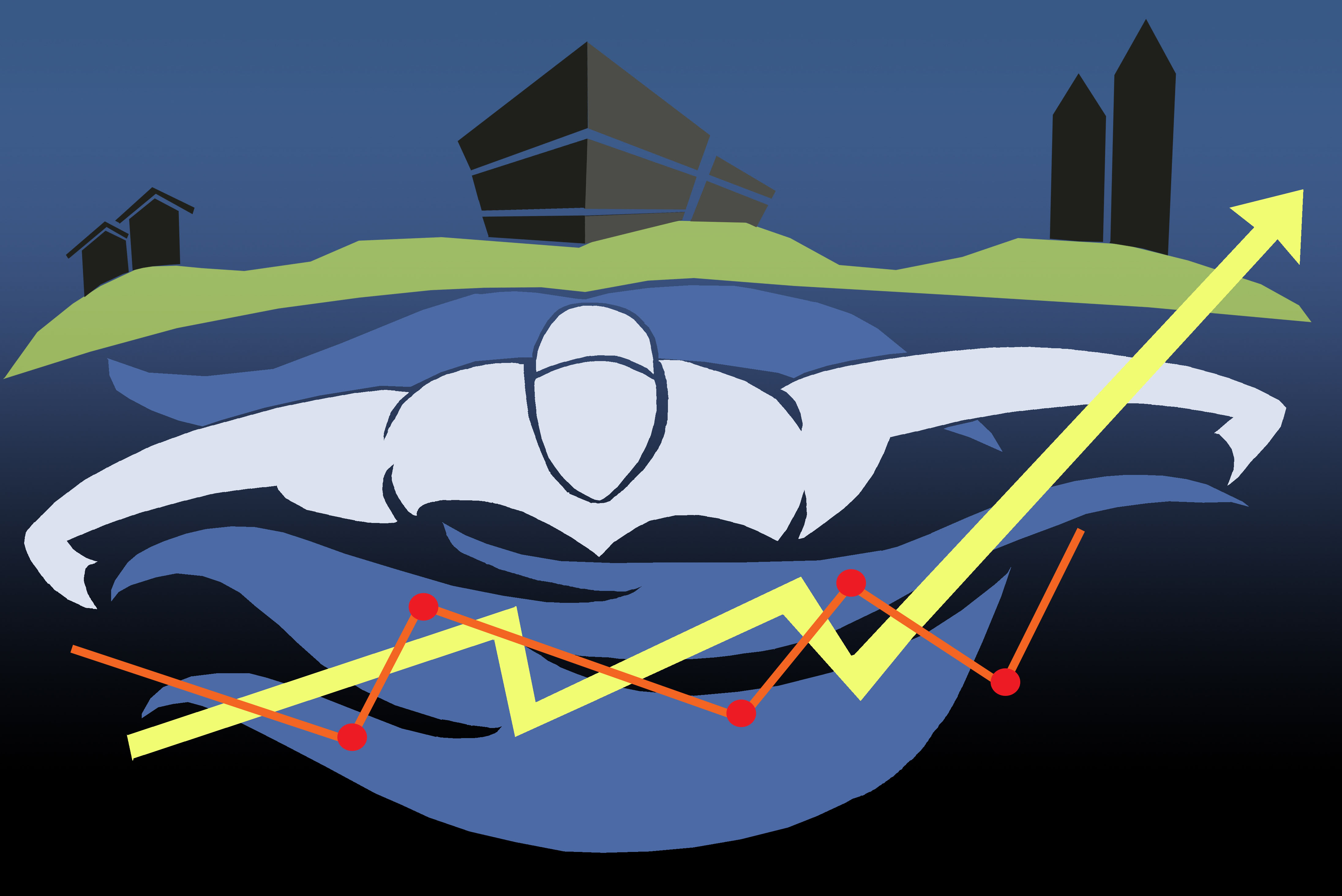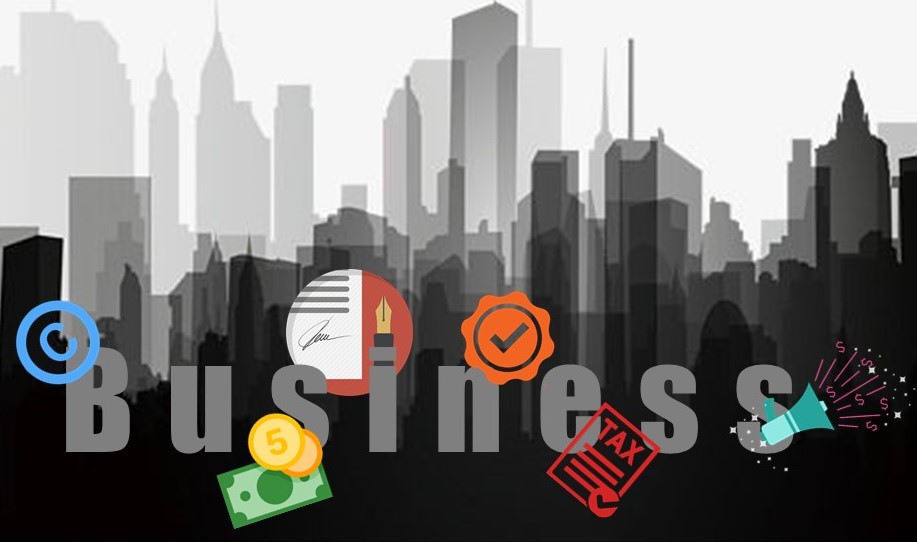.png)
.png)
Exploring Immersive Media Design with Ar. Ruchita Samel
Ruchita Samel, an ‘Immersive Media Designer’, was born and brought up in Mumbai. She graduated with a Bachelor’s in Architecture in 2017 from the University of Mumbai. She did a Master's in ‘Immersive Media Design’ from the MIT Institute of Design, Pune. Currently, she has been working with Dassault Systèmes 3DExcite at their office based out of Pune in the domain of ‘Immersive Media’ for over a year now. The team at WOARCHITECT interviewed Ruchita to get insights into her career profile. This interview was conducted in April 2022.
Q: Please describe briefly what your career profile is and what work entails in the career profile?
I am currently working as an ‘Immersive Media Designer’ for the company Dassault Systémes 3DExcite. My job responsibilities include conceptualizing, designing, and developing digital immersive experiences. Under digital experiences, my primary focus is on Augmented Reality (AR), Virtual Reality (VR), Mixed Reality (MR) Experiences, and other immersive experiences. My company 3DExcite, which is a child company of the global 3DExperience Company, Dassault Systémes, has a focus on creating complete visualization content and experience building for marketing, and sales purposes. This involves right from the Engineering CAD Data received from OEMs (Original Equipment Manufacturers), and all the processes involved in between to create experiences that customers see in the form of product configurators, AR VR applications, and much more. As an ‘Immersive Media Designer’, I work on game engines such as Unity 3D and Unreal Engine which are platforms to build such immersive experiences. My work involves Design Visualization (creating realistic and believable visualizations for whatever the product/architecture maybe), User Experience Design (designing how the Customer will be able to interact within these experiences), and also Development (coding/scripting these functionalities as required for the project).
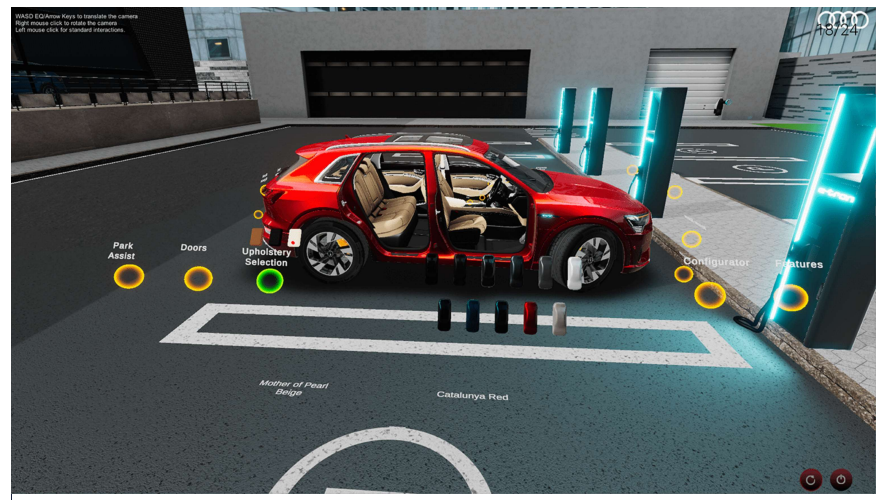
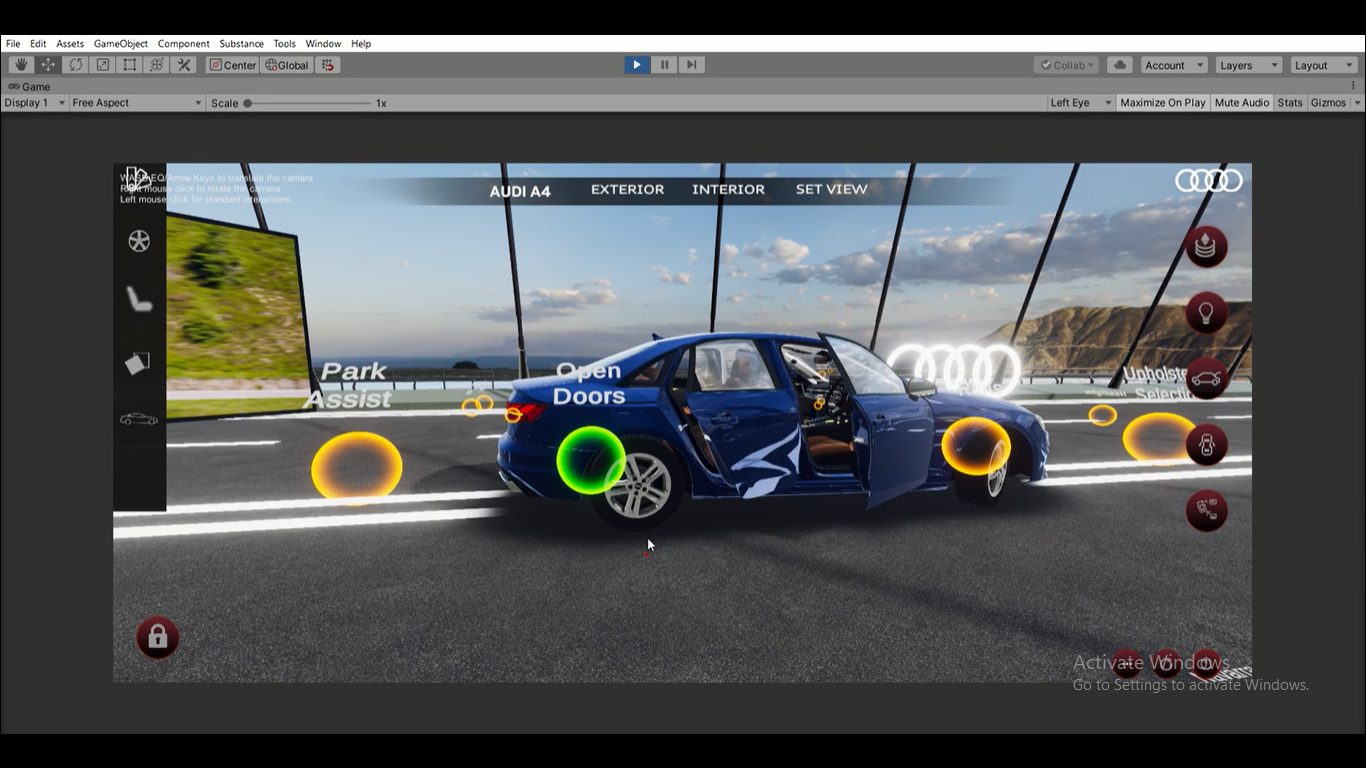
Experience Audi etron in a hands-on VR experience- The project was commissioned and executed with the team at ComXR Pvt. ltd.
Q: What educational qualifications are required for pursuing Immersive Media Design/Masters in Design?
Immersive Media Design is a Post-Graduation Degree course at MIT Institute of Design. The discipline is still relatively new and taking shape. After having completed Bachelor’s in Architecture Design, I have pursued a Master's degree in ‘Immersive Media Design’ discipline from the MIT Institute of Design. This was one of a kind discipline that started in 2018, and I was the first batch to graduate from this discipline. Considering how the world is rapidly heading towards the world of the metaverse, MIT really pioneered and was visionary enough to start this discipline back then when these technologies were not even heard of that much. That being said, other topmost design schools offer courses on similar lines under the names of ‘Interaction Design’ or ‘New Media Design’ or even ‘User Experience Design’ which can also be a platform to pursue a career in this discipline. Top Design schools in India that one could target in this regard are the National Institute of Design at Ahmedabad, IDC at IIT Bombay - Powai, MIT Institute of Design at Pune, Srishti Institute of Art, Design and Technology at Bengaluru, Unitedworld Institute of Design at Ahmedabad, and Symbiosis Institute of Design at Pune. In terms of eligibility for any of these courses, one can head to their individual websites for specifics.

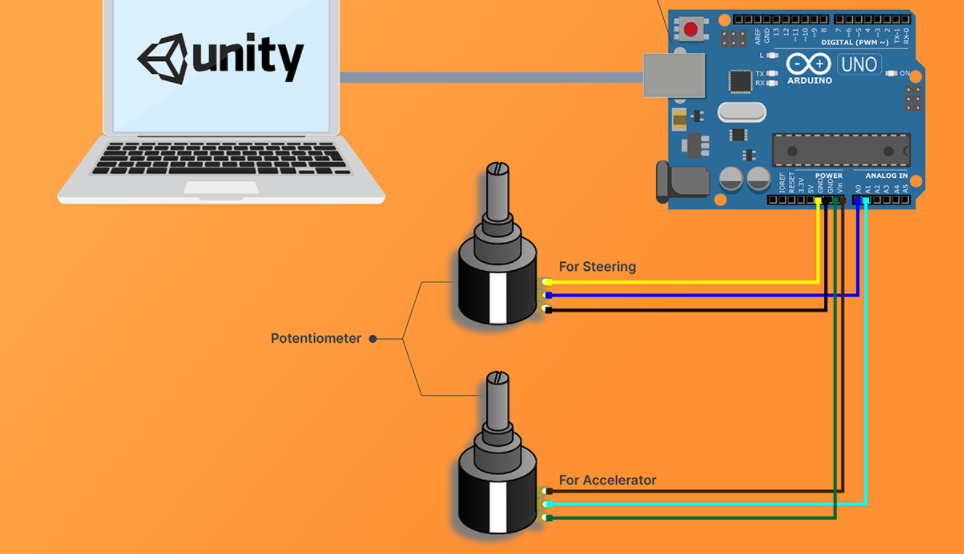 DriVR- Virtual car driving experience. An IoT based VR project. This project was completed as per the academic requirements of the MIT Institute of Design, Pune ©Ruchita Samel
DriVR- Virtual car driving experience. An IoT based VR project. This project was completed as per the academic requirements of the MIT Institute of Design, Pune ©Ruchita Samel
Q: What skill sets are preferred for the career profile?
In terms of a skill set, it depends on what kind of role/industry you want to pursue as an ‘Immersive Media Designer’. There are many facets to designing for this medium.
Suppose one decides to pursue ‘Immersive Media Design’ in Architecture Industry, then it becomes more visualization oriented requiring photorealistic results with a certain degree of User Interface (UI) design for the user to interact with, in the virtual space. This is a very popular kind of experience, where the home buyers can experience the architectural space and maybe even customise it beforehand via such experiences.
Another popular application is in the Entertainment Industry as well, where narratives and storytelling are very important skills.
There are also the hard core manufacturing oriented industries (construction, mining, warehouse, and logistics, etc.) where they have a requirement for training and simulations, and the priority is creating very simplified interfaces for training labourers for those specific jobs and realistic interactions that will allow the users to connect with its real-life training application.
Some job profiles will require you to be more visualization oriented (3D visualization skills), some may require a sense of photography, some may require research oriented work and some may require development skills (coding). So it depends on how you use your existing skills to advance your career in this discipline.
Q: What experience is required to venture into ‘Immersive Media Design’?
Immersive Media Design is a skill that can benefit all the possible industries. Therefore, any kind of educational background is eligible to pursue a career in this field. It is more about how you use your education and cognitive abilities developed so far to design meaningful and immersive experiences. Having done architecture, greatly benefited me in my career in terms of understanding spatial aspects and human ergonomic factors in designing virtual experiences. It also helps me understand Materials and Lighting to apply in these computer generated worlds. I believe to succeed in any design discipline, the most important skill that one can have is that of problem solving. You could have done Electronic Engineering and still have a knack for problem solving. You could have done Marketing as well to have your own methodology of problem solving. That I feel is the best part, because this career invites people from varied backgrounds and integrates them within itself.
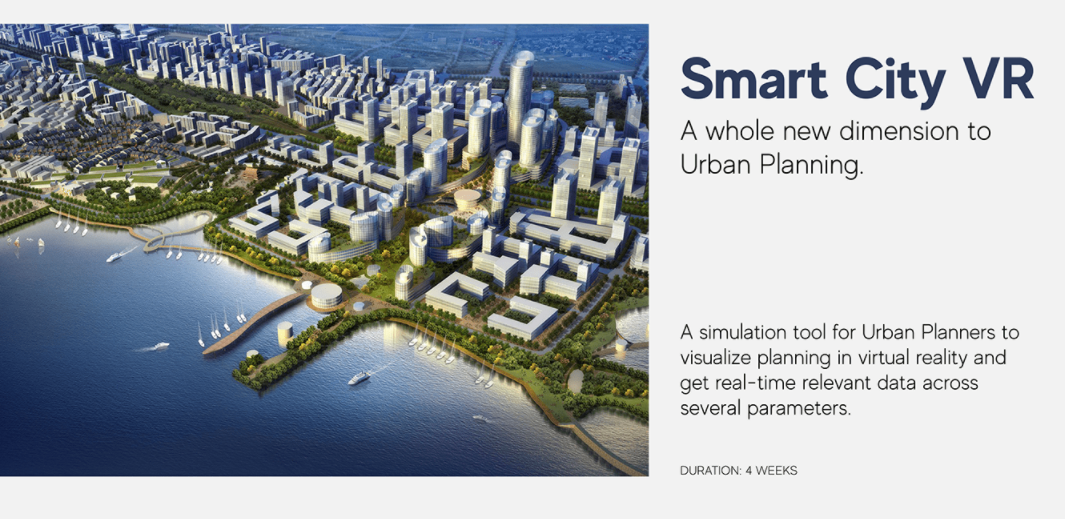
This project was completed as per the academic requirements of the MIT Institute of Design, Pune ©Ruchita Samel
Q: How and why did you decide to choose ‘Immersive Media Design’?
Design as a discipline has always fascinated me since I have come to know of it. Design in its various forms and applications, are all so meaningful and purposeful. I was never fixated on any specific discipline since the beginning. I always view it as an umbrella medium that makes life of humans or even the world in general better, be it in whatever form. After completing my architecture degree, I was fascinated by the domain of User Experience (UX) design, very much so, because it aligned with my design philosophies. I began solving and designing for various User Experience (UX) design based projects as I went about preparing for the entrance exams of the several design schools. During that process, is when this new discipline of ‘Immersive Media Design’ was newly launched at MIT Institute of Design. While I may not have fully known what this course offered and its potential at that time, its vision of designing for futuristic technologies intrigued me and a completely uncharted path that would be an opportunity for innovation. I, as a person, am always up for that kind of challenge and have always opted for unconventional choices in life.
Q: What continues to inspire you about ‘Immersive Media Design’?
The discipline is still at a very nascent stage and there are so many opportunities for exploration within it. I personally find the ability to design seamless experiences for a user which would completely immerse them and the integration of storytelling as a foundation of these experiences are what I find the most fascinating and inspiring. When I see the experiences which I have designed being used by the end clients, it gives me such an immense pleasure to see them be fascinated and immersed in the virtual worlds. It makes me want to create much better experiences. As a designer, you are never really satisfied with your own designs, and that is what keeps you growing. So far I have had the opportunity to work in the domains of Architecture and Automotive experiences, I really look forward to exploring more industries via the work that I am doing. This is a domain that is closely working with the technological advancements that happen globally. This profession keeps me on my toes, as I have to always catch on to the rapid pace of technological advancements that impact this medium greatly. This discipline is a beautiful culmination of design and technology.
Q: How did your architectural background help you in ‘Immersive Media Design’?
I think Architecture is one of the best aligned disciplines for a career in ‘Immersive Media Design’. Architecture provides an understanding of spaces which no other background ever could. This is very important knowledge as, in virtual reality or even other experiences you really are designing virtual spaces or interactions around real world spaces. This knowledge will definitely give you leverage. Apart from this, architecture also teaches you about the interaction of materials and lighting with each other. This is also beneficial to be able to replicate in the virtual world to create as realistic experiences as possible. Other important subjects such as ergonomics, typography, research, and documentations skills are going to benefit you in this domain greatly. As the world of virtual world becomes more and more sophisticated, which it already is in the process of, there is going to be a need for people to design completely virtual spaces in the metaverse. The scope and requirements for jobs in the ‘Immersive Industry’ will further streamline.
Q: What personality is suitable for pursuing ‘Immersive Media Design’?
One of the most important qualities one must possess to have a career in this discipline is the ability to take up challenges. Because, like I mentioned, this discipline is still growing and establishing its roots. There may or may not be enough resources that you can refer to. The technology keeps on upgrading itself every single day, and with that old methodologies may become obsolete soon. You have to keep on evolving your processes to keep up with the pace. Learning and unlearning are the key processes, especially in this discipline. It is definitely a daunting task, but that’s what keeps it interesting, if you’re up for it. Second quality is to have a broader perspective, and look at your work as a part of a whole. That will enable you to solve problems beyond the scope of what is given and that is where you show your abilities as a designer. As an ‘Immersive Media Designer’ you must also have an interdisciplinary approach. There are no strict lines of what is your scope and what isn’t, at least not yet while the discipline is still maturing. If you have that approach, then picking up any skill is not a difficult task really.
Q: What is expected remuneration in the early career period (0-7 years) for the career profile?
I have been working in this domain for over a year now. So I can say that one can expect about 5 to 10 lakh per annum while starting out. That is a general expected range of salary after passing out from design schools. The salary can also surpass the range based on company to company.
As seen in other software professions, one can work in start-up based companies or large scale companies, MNCs etc. In start-up based companies, one can find the opportunity to work on multiple domain-based projects in a really short span of time with immense learning potential, whereas in large companies, the project spans can become longer and also the job responsibilities become more streamlined. You also get to learn how to work collaboratively and to work in a large system. Both are equally competitive and it depends on each person’s perspective on what scenario they would like to work in. Based on the experience of about 2 to 5 years, the average range can be about 7 to 15 lakh per annum and so on (based on market surveys and reports from 2021).
Q: How to get admission to a Design school?
Most of the Design schools that I mentioned previously have a two-part process of entrance tests. First is usually a hand written test, which is a combination of ‘General Knowledge’, ‘Logical Reasoning’ and also ‘Visualization Skills’ (ability to communicate via sketching). These tests usually try to gauge the lateral thinking abilities of the aspirants and also observational skills. On clearing the first phase of these exams, is when you are qualified to appear for the second phase of the entrance tests. Now in this phase, there is a part of the ‘Studio Test’, where one may be evaluated on their ability to quickly solve a given problem and work with whatever has been provided to you. And the second part is where you appear for an interview. In this interview, one is expected to showcase their design skills in the form of a portfolio. You may be questioned on the work you showcase as well as other general knowledge questions to determine your aptitude to become a designer. For bachelor level admissions, the entrance examinations are more generalized, whereas, for masters and above, it becomes more specific to the discipline that you apply for.
Q: What advice do you have for students and young professionals of architecture who are interested in exploring a career in ‘Immersive Media Design’?
I would love to encourage young professionals interested in this career. While you may not exactly be working as an architect, the knowledge that you have accumulated over all those years will never go to waste. In fact, any kind of knowledge will never go to waste. You may never realize how your knowledge will benefit you in your job. I would suggest they keep an open mind and also be ready to unlearn a few things in order to learn new things. Coming from a completely different background as architecture, don’t be afraid of the word ‘coding’. Recently, the eligibility for admission to B.Arch. was restricted to the discipline of science for the HSC examinations. However, I had given my HSC in commerce discipline. So with no background whatsoever in science or engineering, I have been able to do coding sufficiently well enough. There are tremendous resources available online and that’s how everyone does it and there’s no shame in asking Google. In fact, some amount of coding knowledge is going to prove beneficial in the years to come. Also remember that learning is never going to be a full stop. Even as a working professional, you are going to need to keep learning. If you accept this, there’s really nothing to stop you from being successful. For further guidance, I encourage them to approach me on LinkedIn. I would be glad to answer their queries.
From Ruchita:
Hi reader, Thank you for reading through! I am super glad to be able to share my journey with fellow aspirants and young professionals looking for opportunities beyond the mainstream.
It has been an exciting journey for me so far and looking forward to how we collectively shape its future. I am grateful for an amazing support system on a personal as well as professional level. I have encountered some amazing people via professional networking and have learned a lot from them. I myself am a budding young professional with a long way to go and grow. Based on the kind of support and guidance I have received from my network of people, I feel this is my little way of giving back to the community of young aspirants. I hope that whatever insights I could give via this medium would help them. And I would encourage them to approach in case they would like to seek more insights. I am easily accessible via Linkedin. Cheers!
You can find me at
https://www.linkedin.com/in/samel-ruchita
http://instagram.com/samelogue
